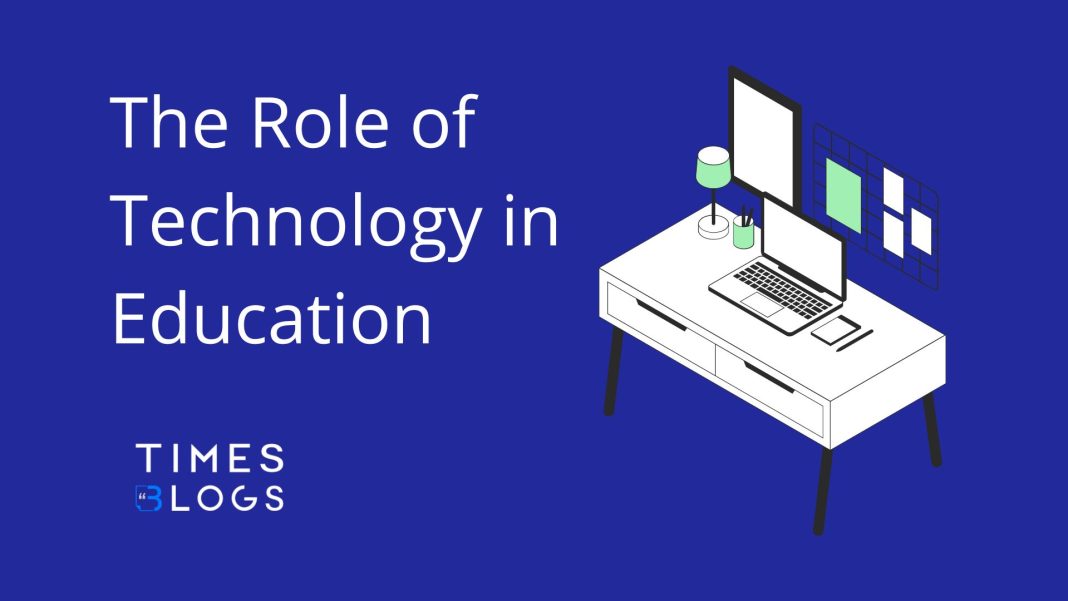Introduction
The use of technology in education has become increasingly popular in recent years. From online learning platforms to educational apps, technology is changing the way we approach learning and teaching. In this article, we will explore the role of technology in education, its benefits and drawbacks, and how it is transforming the way we learn.
What Is The Importance Of Technology In Education?
Technology plays a vital role in education by providing students with access to information, improving engagement, enabling personalized learning, facilitating collaboration and communication, offering access to online courses, and preparing students for the future workforce. With technology, students can learn in new and innovative ways, and educators can use data analytics to track student progress and adjust their teaching methods to meet each student’s needs. Ultimately, technology has made education more accessible and has increased opportunities for students to succeed in their academic and professional pursuits.
Why Technology Is Important In Education?
Technology is important in education because it enhances the learning experience for students, making it more engaging and interactive. It also provides access to a vast amount of information and resources, leveling the playing field for students regardless of their location or socioeconomic status. Technology enables personalized learning, enabling teachers to cater to the individual needs of each student. It also facilitates collaboration and communication, allowing for easier sharing of information and ideas. Additionally, technology provides access to online courses and prepares students for the workforce, where digital skills are increasingly important. Overall, technology has revolutionized education, making it more accessible, efficient, and effective.
Benefits of Technology in Education
Technology has had a significant impact on education, and its benefits are numerous. Below are some of the key benefits of technology in education.
- Enhanced learning experiences
Technology has revolutionized the way students learn, making it more interactive and engaging. With the use of interactive multimedia such as videos, animations, and graphics, students can grasp concepts faster and retain more information. This is because multimedia content is more appealing to the senses and helps students to visualize and understand abstract concepts better.
- Personalized learning
With technology, students can learn at their own pace and in their own way. Adaptive learning systems are now available that can adjust to the student’s level of knowledge, interests, and learning style. This helps to ensure that each student is challenged and motivated to learn, which ultimately leads to better academic performance.
- Improved collaboration and communication
Technology has made it easier for students and teachers to collaborate and communicate with one another. Online learning platforms allow students to connect with their peers and instructors, share ideas and resources, and engage in discussions. This helps to create a more interactive and inclusive learning environment.
- Increased accessibility
Technology has made education more accessible than ever before. Students can now learn from anywhere in the world, as long as they have an internet connection. This is particularly beneficial for students in remote or underserved areas who may not have access to quality education.
Drawbacks of Technology in Education
Despite its numerous benefits, technology in education also has some drawbacks. Below are some of the key drawbacks of technology in education.
- Distractions
One of the main drawbacks of technology in education is that it can be a source of distraction for students. Social media, messaging apps, and other online platforms can take away from students’ focus on their studies. This can lead to lower academic performance and a lack of motivation to learn.
- Dependence on technology
Another potential drawback of technology in education is that students can become overly dependent on it. Students may become reliant on technology to solve problems and may struggle to think critically and creatively without it. This can lead to a lack of essential skills such as problem-solving and independent thinking.
- Inequality
Technology in education can exacerbate existing inequalities. Students who do not have access to technology or who do not have the necessary skills to use it effectively may be left behind. This can create a digital divide, where some students have access to high-quality education while others do not.
Examples of Technology in Education
There are many different examples of technology in education. Below are some of the most popular and widely used technologies in education today.
- Learning Management Systems (LMS)
Learning management systems (LMS) are online platforms that allow teachers and students to manage and deliver educational content. LMSs typically include features such as course materials, discussion forums, quizzes, and assessments. Popular LMSs include Blackboard, Canvas, and Moodle.
- Educational Apps
Educational apps are designed to help students learn and reinforce key concepts. These apps are often interactive and include features such as quizzes, games, and videos. Examples of popular educational apps include Duolingo, Khan Academy, and Quizlet.
- Online Courses
Online courses are becoming increasingly popular as a way to deliver education. These courses can be taken from anywhere in the world and often include interactive multimedia such as videos, quizzes, and discussion forums. Examples of popular online course providers include Coursera, Udacity, and edX.
- Virtual and Augmented Reality
Virtual and augmented reality are emerging technologies that have the potential to revolutionize education. Virtual reality (VR) allows students to experience immersive simulations of real-world environments, while augmented reality (AR) overlays digital information onto the physical world. These technologies can be used to enhance learning in subjects such as science, engineering, and medicine.
- Artificial Intelligence
Artificial intelligence (AI) is another technology that is transforming education. AI systems can be used to create personalized learning experiences, analyze student performance, and identify areas where students need extra help. AI can also be used to automate administrative tasks, freeing up teachers’ time to focus on teaching and learning.
- Gamification
Gamification is the use of game design elements in non-game contexts, such as education. Gamification can make learning more engaging and motivating for students by incorporating elements such as rewards, points, and badges. Gamification is often used in language learning, math, and science.
Technology in Education: Case Study
One example of how technology is being used in education is the Khan Academy. The Khan Academy is a non-profit organization that provides free online educational resources in a variety of subjects, including math, science, history, and economics. The Khan Academy was founded in 2008 by Salman Khan, who started creating educational videos to help his cousins with their homework.
Today, the Khan Academy has over 10,000 videos and interactive exercises that are used by millions of students and teachers around the world. The Khan Academy’s mission is to provide a free, world-class education to anyone, anywhere. The organization has partnerships with schools and universities around the world and has been recognized for its innovative approach to education.
The Khan Academy’s videos are designed to be short, engaging, and easy to understand. The videos are typically 10 minutes or less and use a combination of animations, graphics, and voice-over narration to explain key concepts. The Khan Academy’s interactive exercises are designed to reinforce the concepts covered in the videos and provide immediate feedback to students.
The Khan Academy has been praised for its ability to personalize learning. The platform uses data analytics to track student progress and provide personalized recommendations for further study. This helps to ensure that each student is challenged and motivated to learn.
Challenges of Technology in Education
While technology has transformed education in many ways, it has also presented several challenges. Here are some of the most significant challenges of technology in education:
- Cost:
The cost of implementing technology in education can be high, including hardware, software, and infrastructure costs. This can make it difficult for schools with limited budgets to keep up with the latest technology. - Training:
Teachers and administrators need to be trained on how to use technology effectively in the classroom. This can be a time-consuming and expensive process, and some educators may resist change or struggle to adapt to new technology. - Maintenance and Support:
Technology requires ongoing maintenance and support, which can be a challenge for schools with limited IT resources. Technical issues can disrupt learning, and schools need to have a plan in place to address these issues quickly. - Digital Divide:
While technology has the potential to level the playing field for all students, there is still a significant digital divide in many areas. Students from low-income families or rural areas may not have access to the same technology resources as their peers, which can put them at a disadvantage. - Distractions:
Technology can be a distraction in the classroom, particularly if students are using devices that are not related to their schoolwork. This can be challenging for teachers to manage and can impact student learning. - Privacy and Security:
Technology also raises concerns around privacy and security. Schools need to ensure that student data is protected and that technology is used in a responsible and ethical manner.
Impact of Technology in Education
Technology has had a significant impact on education, and its benefits are numerous. Technology has made education more accessible, interactive, and engaging. It has also enabled personalized learning, improved collaboration and communication, and provided new opportunities for students and teachers alike. However, technology in education also has some drawbacks, such as the potential for distraction and the risk of exacerbating existing inequalities.
As technology continues to evolve, it will undoubtedly continue to transform education. The challenge for educators will be to ensure that technology is used in a way that maximizes its benefits and minimizes its drawbacks. By doing so, we can create a world where every student has access to high-quality education and the tools they need to succeed.




